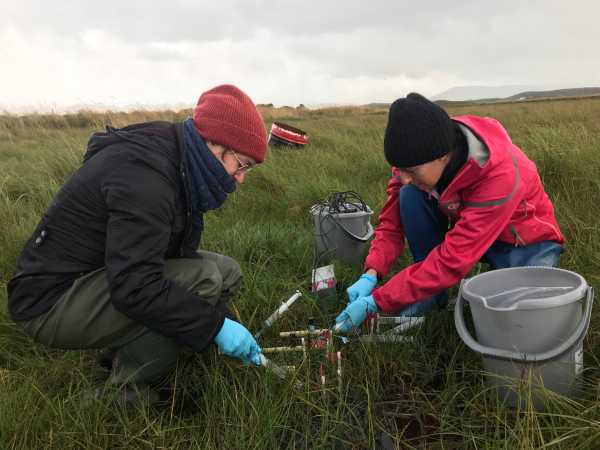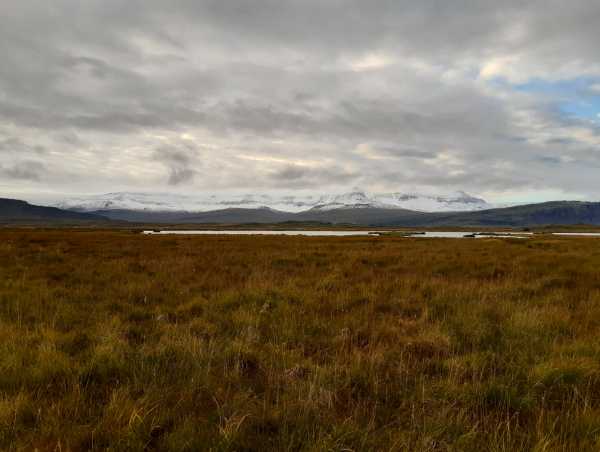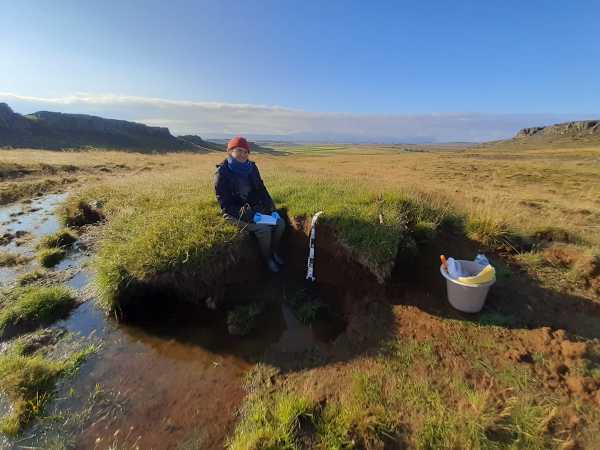Mercury distribution and species transformations in soils
Project Team: Sylvain Bouchet, Maureen Le Bars and Ruben Kretzschmar
Collaborators: Olafur Arnalds (Agricultural University of Iceland), Laurel K. ThomasArrigo (University of Neuchâtel), Andreas Kappler (University of Tübingen), Sara Kleindienst (University of Tübingen), Franziska Schädler (University of Tübingen), Sebastian Dötterl (ETH Zürich, Soil resources)
Funding: ETH Career Seed Grant (Maureen Le Bars)
Mercury emissions have increased since the industrial revolution due to anthropogenic activities such as gold mining, coal combustion and metal production. As a result, mercury concentrations have largely increased in all environmental compartments, including freshwaters, oceans, and soils. Soils represent the largest reservoir of Hg on Earth and they are usually seen as a sink for Hg, i.e. a compartment where it accumulates and remains stable. However, depending on environmental conditions, Hg present in soils may be destabilized. It can be transformed, i.e. methylated to the neurotoxic form methylmercury (MeHg) or reduced to the volatile elemental (Hg°) and/or released through volatilization, erosion and/or leaching.
The production of both the neurotoxic MeHg and the volatile Hg° species is expected to increase in reduced soils. Indeed, their formation is controlled by the presence of anaerobic microorganisms and reduced minerals, respectively. Therefore, these Hg transformations are expected to occur in wetlands or as a consequence of climate change (flooded soils due to heavy precipitations, permafrost thaw). On the other hand, Hg can be released from soils when land-use changes, i.e. upon conversion from forests to agricultural soils. Despite an increasing interest for Hg in soils, the extent of these transformations as well as the controlling factors remain poorly understood. We are thus studying Hg cycling in soils from various settings, i.e. the northern soils of Iceland and tropical soils of central Africa, to predict the outcome of these environmental perturbations on the fate of Hg stored in these ecosystems.
Key Publications:
Etique, M., Bouchet, S., Byrne, J. M., ThomasArrigo, L. K., Kaegi, R., and Kretzschmar, R. (2021): Mercury reduction by nanoparticulate vivianite. Environ. Sci. Technol. 55(5):3399-3407. external pageFull textcall_made
Osterwalder, S., Huang, J.-H., Shetaya, W. H., Agnan, Y., Frossard, A., Frey, B., Alewell, C., Kretzschmar, R., Biester, H., and Obrist D. (2019): Mercury emission from industrially contaminated soils in relation to chemical, microbial, and meteorological factors. Environ. Pollut. 250: 944-952. external pageFull textcall_made
Gilli, R., Karlen, C., Weber, M., Rüegg, J., Barmettler, K., Biester, H., Boivin, P., Kretzschmar, R. (2018): Speciation and mobility of mercury in soils contaminated by legacy emissions from a chemical factory in the Rhône Valley in Canton of Valais, Switzerland. Soil Syst. 2(3):44. external pageFull textcall_made
Grigg, A.R.C., Kretzschmar, R., Gilli, R.S., Wiederhold, J. (2018): Mercury isotope signatures of digests and sequential extracts from industrially contaminated soils and sediments. Sci. Total Environ. 636: 1344–1354. external pageFull textcall_made
Jiskra, M., Wiederhold, J. G., Skyllberg, U., Kronberg, R.-M., and Kretzschmar, R. (2017): Source tracing of natural organic matter bound mercury in boreal forest runoff with mercury stable isotopes. Environ. Sci.: Processes Impacts 19: 1235-1248. external pageFull textcall_made



